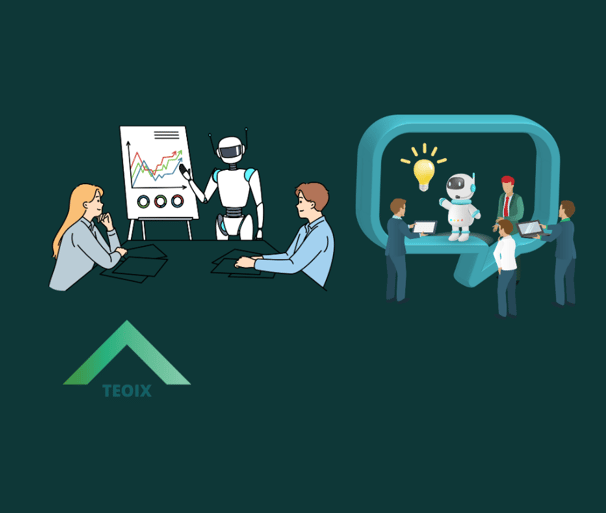Conversational AI: Transforming Interaction in the Digital Age
ARTIFICIAL INTELLIGENCE
5/22/20244 min read


Conversational artificial intelligence, a catch-all name for technologies that let computers comprehend, interpret, and react to natural language, has completely changed how people communicate with computers. Natural language processing (NLP), machine learning, and speech recognition are used by these systems—which include chatbots, virtual assistants, and interactive voice response (IVR) systems—to enable smooth communication between people and machines. Conversational AI is becoming more and more intelligent, and as a result, its applications are spreading throughout a number of industries and improving user experiences.
Conversational AI's Development
In the 1960s, rudimentary rule-based chatbots like ELIZA, which mimicked speech using prewritten scripts, marked the beginning of conversational AI. These early computers' incapacity to comprehend context or pick up on interactions, however, was a limitation. A big advancement came with the introduction of NLP and machine learning in the late 20th and early 21st centuries. Artificial intelligence (AI) technologies such as Apple's 2011 Siri demonstrated the ability of virtual assistants to comprehend and react to customer inquiries in real-time.
Deep learning is a branch of machine learning that uses data to model high-level abstractions, and it has been the driving force behind recent advances. Because of this, complex models like OpenAI's GPT-3, which can produce language that resembles that of a human being based on enormous volumes of data, have been made possible. Because these models can handle sophisticated inquiries, comprehend context, and even imitate human speech patterns, interacting with AI becomes easier and more intuitive.
Utilizations in All Sectors
Numerous industries are using conversational AI, and each one is able to take use of its special benefits.
Customer service:
Companies are employing virtual assistants and chatbots more and more to answer questions from customers. By resolving ordinary problems and elevating complex matters to human agents, these systems can improve efficiency and customer satisfaction while offering round-the-clock service. For instance, banks deploy chatbots powered by AI to assist consumers with loan applications, transaction details, and account questions.
Healthcare:
Conversational AI is revolutionizing patient communications in the field of healthcare. Virtual assistants are capable of appointment scheduling, prescription reminders, and symptom-based preliminary diagnosis. In addition to improving patient involvement, this lessens the workload for medical staff. AI-enabled solutions, such as Babylon Health's chatbot, show how AI might be used in primary care by analyzing user symptoms and offering medical recommendations.
E-commerce:
By making product recommendations, helping with orders, and delivering after-sale support, retailers employ chatbots to improve the shopping experience. For example, Amazon's Alexa smoothly integrates into the e-commerce ecosystem and enables consumers to browse for products, place orders, and receive personalized suggestions.
Education:
To tailor learning experiences, educational platforms are integrating Conversational AI. AI instructors are able to respond to questions from students, adjust content to fit different learning speeds, and offer immediate feedback. Platforms like Duolingo, which employ artificial intelligence (AI) to lead language learners via individualized courses, are prime examples of how this technology enables a more dynamic and interesting learning environment.
Human Resources:
Recruiting, onboarding, and employee engagement are all facilitated by conversational AI. The hiring process can be streamlined by using AI-driven chatbots to review resumes, set up interviews, and respond to candidate inquiries. Virtual assistants aid new hires in settling in by supplying knowledge about corporate policies and processes during onboarding.
Conversational AI's Technology
Many essential technologies are required for conversational AI systems:
Natural Language Processing (NLP):
Machines can comprehend and process human language thanks to natural language processing, or NLP. Sentiment analysis, context recognition, and syntax and semantic analysis are some of its constituent parts. AI can now understand the subtleties of human language thanks to NLP, which improves the meaning of conversations.
Machine Learning:
Conversational AI is able to learn from encounters and gradually improve its responses thanks to machine learning techniques. These algorithms improve the system's capacity to respond to a variety of inquiries by analyzing data from previous encounters to identify patterns and anticipate outcomes.
Speech Recognition:
Text is generated from spoken words using speech recognition technology. In order for voice-activated systems, such as virtual assistants, to comprehend and react to spoken commands, this is essential.
Deep Learning: The capabilities of Conversational AI have been greatly enhanced by deep learning models, especially neural networks. Large-scale data processing and intricate pattern recognition capabilities of these models allow for more precise and human-like replies.
Obstacles and Prospects for the Future
Even with its improvements, conversational AI still has a number of drawbacks. Ensuring response accuracy and dependability is a significant problem, especially for high-stakes applications like healthcare. Unfair or inaccurate results can also result from biased AI models, which are derived from biased training data. Moreover, given the delicate nature of the discussions these systems handle, protecting user privacy and data security is still a top priority.
In the long run, conversational AI will benefit from improving its emotional intelligence and contextual awareness. By incorporating emotional detection capabilities, AI may be able to react with greater empathy and increase consumer pleasure. Furthermore, AI will be able to have more cogent and contextually relevant conversations as more sophisticated multi-turn conversation systems are developed.
In summary
Conversational AI is revolutionizing our interactions with technology by providing more engaging, effective, and natural experiences. Applications for the technology will grow as it develops, spurring innovation in a range of sectors. ever if there are still obstacles to overcome, continued developments in NLP, machine learning, and deep learning offer the possibility of ever more complex and human-like interactions, opening the door for a time when conversational artificial intelligence will play a significant role in everyday life.


